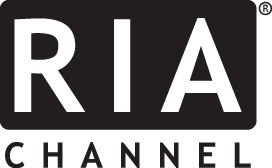
Industrial companies are experiencing a major transformation as they take aggressive steps to elevate their operations in order to remain competitive. Many of these companies operate in mature, stable industries and are attempting to compete using antiquated computer systems, manufacturing processes and back-office functions that need to be upgraded with innovative technology and forward-thinking business plans. Artificial intelligence (AI) and technological advancements such as robotics and sensors are reawakening industries that have been struggling, enabling them to be productive and competitive again. Some are calling this the Fourth Industrial Revolution.
For example, AI in manufacturing is predicted to compound at a 44% annual rate from 2024 to 20341, as companies modernize outdated systems and seek new avenues for growth. Yet many lack the requisite resources and capabilities to implement necessary improvements. This presents private equity managers with enormous opportunities, especially those with operational expertise and a long-term track record of unlocking value. By owning private companies outright, these firms can directly influence day-to-day operations—what sets the best apart is their ability to boost efficiency, lower costs, and build scalable systems. Rather than relying on favorable markets, top investors create value by improving businesses from within, consistently finding ways to expand profit margins—a crucial competitive edge in today’s economy.
Roll-the-Dice PE to Roll-Up-Your-Sleeves PE
As Anuj Ranjan, CEO of Brookfield Private Equity, puts it: “The PE industry has gone from roll-the-dice PE to roll-up-your-sleeves PE. You have to really go into a business and operate it better. That’s the only way to generate market-leading returns.”
Brookfield combines decades of experience with global scale and a strong network to invest in leading businesses that provide essential products and services. Rather than relying on financial engineering, Brookfield focuses on operational improvements—applying a proven playbook to enhance cash flow and drive long-term growth.
Its private equity approach follows a disciplined three-step process:
- Evaluate quality – Before investing, Brookfield assesses each company across six key factors to determine overall business quality.
- Identify value – It then targets businesses that offer the most attractive value relative to their purchase price.
- Drive performance – Once acquired, Brookfield works to grow cash flow through hands-on operational improvements.
Their deep industry knowledge and hands-on approach position them at the forefront as industrial firms transition to smart, highly automated factories driven by AI, robotics, and advanced analytics.
Private Equity: A Growing Opportunity for Sophisticated Private Wealth Portfolios
While institutional investors typically allocate 9% to 19% of their portfolios to private equity, individual investors lag far behind—averaging just 2%. This gap signals a compelling opportunity for private wealth investors to align with institutional best practices and enhance portfolio outcomes.
According to a recent Preqin survey2, more than 60% of institutional investors have exposure to private equity, attracted by the asset class’s potential for higher absolute returns, improved risk-adjusted performance, and diversification benefits. As public markets become increasingly concentrated, private equity offers a differentiated source of long-term growth and resilience.
Private equity can diversify a portfolio beyond public equities—not only through company selection but also through sector exposure. For instance, consumer discretionary and industrial companies often have greater representation in private equity portfolios than in public markets. Historically, private equity has also delivered stronger performance across various market environments, outperforming public equities in three of the four inflation-growth scenarios since 2008, including periods of high growth/high inflation, high growth/low inflation, and low growth/high inflation.
As the next wave of the industrial revolution reshapes global markets, private equity offers investors a powerful way to access this transformation—combining long-term growth potential, portfolio diversification, and the opportunity to invest in the real economy.
To learn more, register and watch Broofield’s webcast: From Legacy to Leadership: Private Equity at the Helm of Industrial Innovation.
Smart factories powered by Artificial Intelligence (AI) and robotics are transforming industries, driving demand for private capital as companies look to upgrade legacy systems and scale operations. Private equity firms with deep operating expertise are well positioned to lead this shift—modernizing businesses and enabling long-term value creation.
David Nowak, President, Brookfield Private Equity, will explain:
- The next wave of transformation as the fourth industrial revolution is rapidly reshaping markets, economies, and everyday life.
- The power of AI to unlock value as manufacturing companies will turn to private equity funding to modernize, restructure and power progress.
- How private equity firms with deep operating expertise are well positioned to lead this shift—modernizing businesses and enabling long-term value creation.
1 This illustration is hypothetical and solely demonstrates the effect of a stated growth rate. It is not a forecast or guarantee of future performance.
2Preqin H1 2024 Outlook, 2024.
IMPORTANT DISCLOSURES
All investing involves risk. The value of an investment will fluctuate over time, and an investor may gain or lose money, or the entire investment. Past performance is no guarantee of future results.
Private equity investments are speculative and involve substantial risks, including potential loss of capital, limited liquidity, and long holding periods. These investments are not subject to the same regulatory oversight as public markets and may rely on key personnel, limited operating history, and successful exit strategies. Past performance is not indicative of future results, and there is no assurance that objectives will be met or that private equity will outperform public markets.
The information contained herein is for educational and informational purposes only and does not constitute, and should not be construed as, an offer to sell, or a solicitation of an offer to buy, any securities or related financial instruments. This publication discusses broad market, industry or sector trends, or other general economic or market conditions, and it is being provided on a confidential basis.
FORWARD-LOOKING STATEMENTS
Information herein contains, includes or is based on forward-looking statements within the meaning of the federal securities laws, specifically Section 21E of the Securities Exchange Act of 1934, as amended, and Canadian securities laws. Forward-looking statements include all statements, other than statements of historical fact, that address future activities, events or developments, including, without limitation, business or investment strategy or measures to implement strategy, competitive strengths, goals, expansion and growth of our business, plans, prospects and references to our future success. You can identify these statements by the fact that they do not relate strictly to historical or current facts. Words such as “anticipate,” “estimate,” “expect,” “project,” “intend,” “plan,” “believe” and other similar words are intended to identify these forward-looking statements. Forward-looking statements can be affected by inaccurate assumptions or by known or unknown risks and uncertainties. Many such factors will be important in determining our actual future results or outcomes. Consequently, no forward-looking statement can be guaranteed. Our actual results or outcomes may vary materially. Given these uncertainties, you should not place undue reliance on these forward-looking statements.
Information and views are subject to change without notice. Some of the information provided herein has been prepared based on Brookfield’s internal research, and certain information is based on various assumptions made by Brookfield, any of which may prove to be incorrect. Brookfield may not have verified (and disclaims any obligation to verify) the accuracy or completeness of any information included herein, including information that has been provided by third parties, and you cannot rely on Brookfield as having verified any of the information.
The information provided herein reflects Brookfield’s perspectives and beliefs as of the date of this commentary.
©2025 Brookfield Corporation.; ©2025 Oaktree Capital Management, L.P.; ©2025 Brookfield Oaktree Wealth Solutions LLC & ©2025 Brookfield Public Securities Group LLC
ID#B-782934

